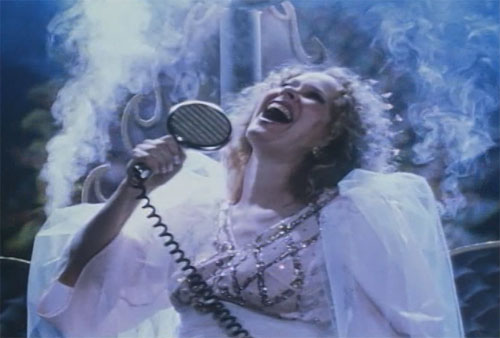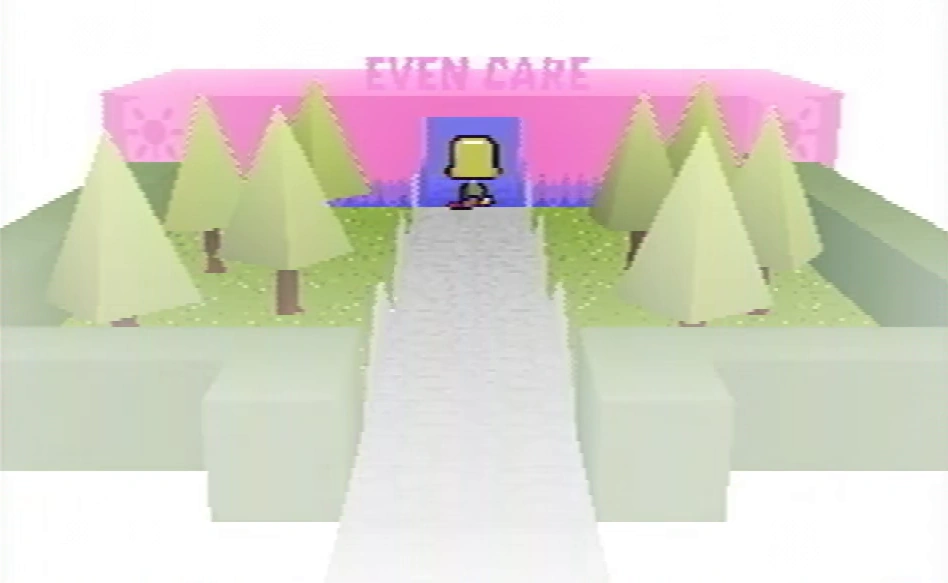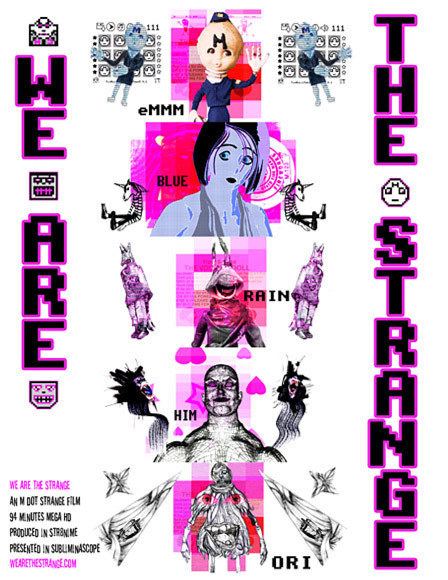Director: Trent Harris
Cast: Bill Allred as Vicious; Sina
Amedson as Sheriff Butler; Kim Armston as Sassy; Dan Morley as Franklin;
Stefene Russell as T.T. Swackhumma; Liberty Valentine as Lisa
 To be honest*, Delightful Water Universe is an
acquired taste. Some filmmakers enter a period when they are older where they
make films or work that are low budget, even homemade, taking advantage of the
newest technology when they become outsiders to the industry. This is not a bad
thing, and is in fact an ultimate form of auteurism, these people happier
making films without restrictions in ideas even if they could be restricted by
resources. Ken Russell, for example,
eventually went from helming expensive Warner
Bros. films to making films in his garage, and Jean-Luc Godard arguably has been doing the same for the 2010s. The
only potential issue is that of indulgence, which for me is charming if you
follow the idea like I have that cinema should be viewed as part of human
communication. It can also be idiosyncratic to say the least, in a way that is
potentially off-putting.
To be honest*, Delightful Water Universe is an
acquired taste. Some filmmakers enter a period when they are older where they
make films or work that are low budget, even homemade, taking advantage of the
newest technology when they become outsiders to the industry. This is not a bad
thing, and is in fact an ultimate form of auteurism, these people happier
making films without restrictions in ideas even if they could be restricted by
resources. Ken Russell, for example,
eventually went from helming expensive Warner
Bros. films to making films in his garage, and Jean-Luc Godard arguably has been doing the same for the 2010s. The
only potential issue is that of indulgence, which for me is charming if you
follow the idea like I have that cinema should be viewed as part of human
communication. It can also be idiosyncratic to say the least, in a way that is
potentially off-putting.
Delightful Water Universe is charming if anything, even in its
moments of titillation being merely actresses in exotic under garments but
never explicit beyond this. It probably realises its plot, effectively a remake
of Plan 10 from Outer Space (1995),
but with a washed up male news reporter in a dystopian world and Bigfoot being
a left wing political subversive, is a bit ad hoc at points and stretching its
low budget. It probably finds joy in that too, and bless the production for
thinking like this.
Made in 2008, when Barack Obama would become President of
the United States soon after, the film feels of the George Dubya Bush days, now so remote in comparison it is amazing
we once held that in some quarters as the end of civilisation. Films from that
era, like this or a big box office failure like Southland Tales (2006), were probably right to deal with it with a
cartoonish nature, suiting the tone of the era nowadays as we look back and see
how absurd it was in real life. Harris
to his credit hits ideas that are not that removed from the criticisms of the
real first world even decades on, that there is a continuous barrage of
advertisements and that the news is a puff piece for corporations, to which the
protagonist is a washed up journalist who cannot pay his bar tabs and misses
important events, like an American football star going insane and kidnapping a
busload of Mormon schoolgirls.
The acquired nature of the film, structured
like Plan 10, is that it is very
determined to follow its plot with few tangents, mostly following our lead
meeting someone, gaining new details and wandering on. It never really moves
beyond this and the plot itself is very eccentric and loose to say the least.
Between the title, a soda drink which is an Aldous
Huxley approved soma, and a corrupt politician who fails at public
arguments but still gets ahead of the polls**, this is the low
budget take on the likes of Southland Tale which are over the top and absurd.
Barring the explicit detail
(curious and dropped) that Bigfoot rogered a male politician, which is
technically a rape joke and another in the bizarre obsession in American culture
being obsessed with the Cryptozoology specific being randy for humans1,
there is always a sense of whimsy even when it is being serious. Even Harris'
clear attraction to women is quaint, beautiful figures but contrasted by the
second lead, a figure with a speech impediment who follows the reporter and is
more assertive, a follow up from protagonist Lucinda in Plan 10 as a charming, downright lovable female figure who is not
objectified or demeaned.
Harris works with what he has, which means this is a very eccentric
sci-fi tale which does not try to look like the future in the slightest. That
is to his advantage even if the viewer is not as fond of the indulgences,
entirely because every idea I mentioned is something that transpires in real
life and there is never any tech that has drastically dated in the slightest.
Even the addictive soda drink is like sugar rich foods we warn children not to
have and the film nearly turns into a low budget Chinatown (1974) as it involves politicians buying up land and
access to water supplies. The difference too is that all of this has a sense of
humour. That Bigfoot is real and is savvy enough to put windshield wipers and a
giant kitchen sieve together to make a head garment that can pick up signals,
used to promote his Dada-like political comments against consumerism. This, for
all the padding in the film, is why I am glad to see a film like this, because
even the semblance of the idea is wonderfully absurd.
I have not mentioned that this is
a story-within-a-story, as Delightful
Water Universe is actually a tale being written by another figure in his
own story. A man in a mental institution, watching by a single male guard, he
continues on the typewriter he is allowed to have whilst society outside is
crumbling under a violent revolution. Said writer is shown to be an egotistical
figure who thinks he is a literary genius, even the instigator of profound revolution,
in spite of the fact he is neither and that the world (shown in stock footage)
is burning down already around him.
This is the most interesting part
of Delightful Water Universe, where
this is Trent Harris showing how
interesting he is as a creator, because we have to process that the absurdities
of the plot inside the bookends are influenced by his clear incompetence and
egotism, and that there is an unexpected sadness too. Namely that this figure
is still pining for a female figure, entering the story as a member of those
Mormon schoolgirls who comes to the lead, providing him the McGuffin of the
windscreen wiper transmitter helmet and leaving the reporter pining for her
after a one night stand, a love sick puppy onwards. It is this whole aspect,
these complications, which bring up some additional questions, whether we are
to question this entire main story in terms of bias or not. It does provide
also an emotional connection as, with even his utter ignorance of himself, he
is still someone to follow, where even his guard is just there to have someone
to talk too, making the final with him stuck in the room and memories coming to
haunt him a surprise change of tone to the film. That makes any indulgences
with the film acceptable as they pay off eventually.
Abstract Spectrum: Eccentric
Abstract Rating (High/Medium/Low/None): None
====
* And in mind that this
particular review was made possible because the director Harris was kind enough upload his films to YouTube temporarily through 2020 for the public to see, which can
feel like biting the hand of a benefactor.
** Trent Harris to his credit, again, pointing out something we only
come to realise happens in the 2010s and 2020s a lot.
1) From softcore like Sweet Prudence and the Erotic Adventure of
Bigfoot (2011) to actual porn in The
Geek (1971), this is surprisingly common. That is not including the
literary genre of monster porn, which was surprisingly
prolific and with a surprising amount of female authors.







.jpg)















